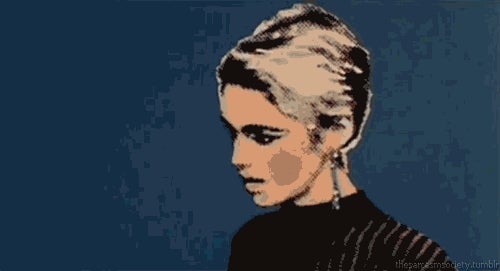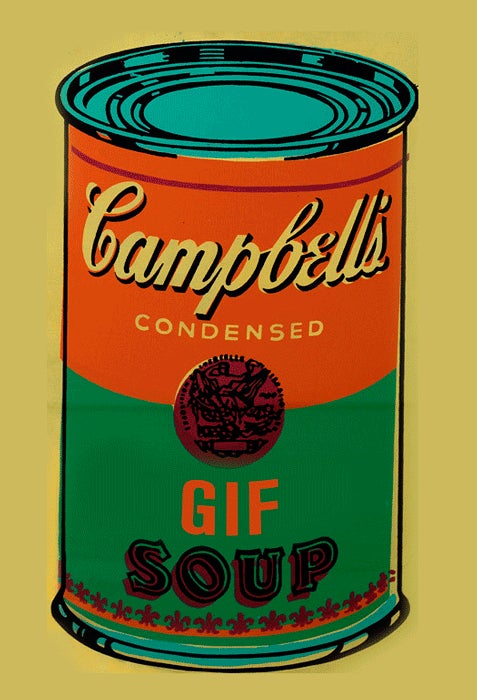7 Andy Warhol GIFs That’ll Make Your Eyes Pop!


Marilyn Monroe
"Warhol’s Marilyn images are some of his most iconic works. He began producing them shortly after her death in 1962, based on a photograph taken by Gene Gorman as a publicity shot for her 1953 film Niagara. By duplicating this photograph, known to millions, it has been said that Warhol created an icon out of an icon."

Flowers
"Within this GIF, you can see an example of one of Warhol’s sought-after series of prints. Adapted from a photograph taken by Patricia Caulfield, it depicts a rare species of the hibiscus flower. The bright patterns look similar to motifs found on wallpaper (a visual medium Warhol frequently referenced), and you might recognize them from the NARS Andy Warhol collection."

Warhol's Factory and Edie Sedgwick
"In the 1960s, Warhol mostly abandoned hands-on artistic labor, leaving the work to assistants and friends while he acted as a kind of director. He cultivated a fluctuating cadre of 'superstars'— actors, artists, poets, scenesters, and assorted characters at his infamous Factory studio. Their daily lives were documented by filmmaker Jonas Mekas, the photographer Billy Name, and by Warhol himself in his films, recordings, and photographs. The Factory was a locus for celebrities, eccentrics, and collectors, and its activity helped launch the careers of several other artists during its two-decade existence."

Warhol's Factory and Edie Sedgwick
"'One person in the '60s fascinated me more than anybody I had ever known. And the fascination I experienced was probably very close to a certain kind of love.' — Andy Warhol on Edie Sedgwick, pictured in this GIF."

The Velvet Underground & Nico Banana-Sticker Album Art
"Credited as the producer for The Velvet Underground & Nico album (though having little direct influence beyond paying for the recording sessions), Andy Warhol supplied the print for its cover. Early copies invited the owner to 'peel slowly and see' — peeling back the sticker revealed a flesh-colored banana."

Campbell’s Soup Can
"Arguably his most iconic and widely recognized series, Warhol takes the ever-present American pantry staple and transforms it into high art. Originally, a commercial graphic artist, Warhol found the imagery of the Campbell's soup label a powerful visual tool, since the design had remained successfully unchanged for decades."







